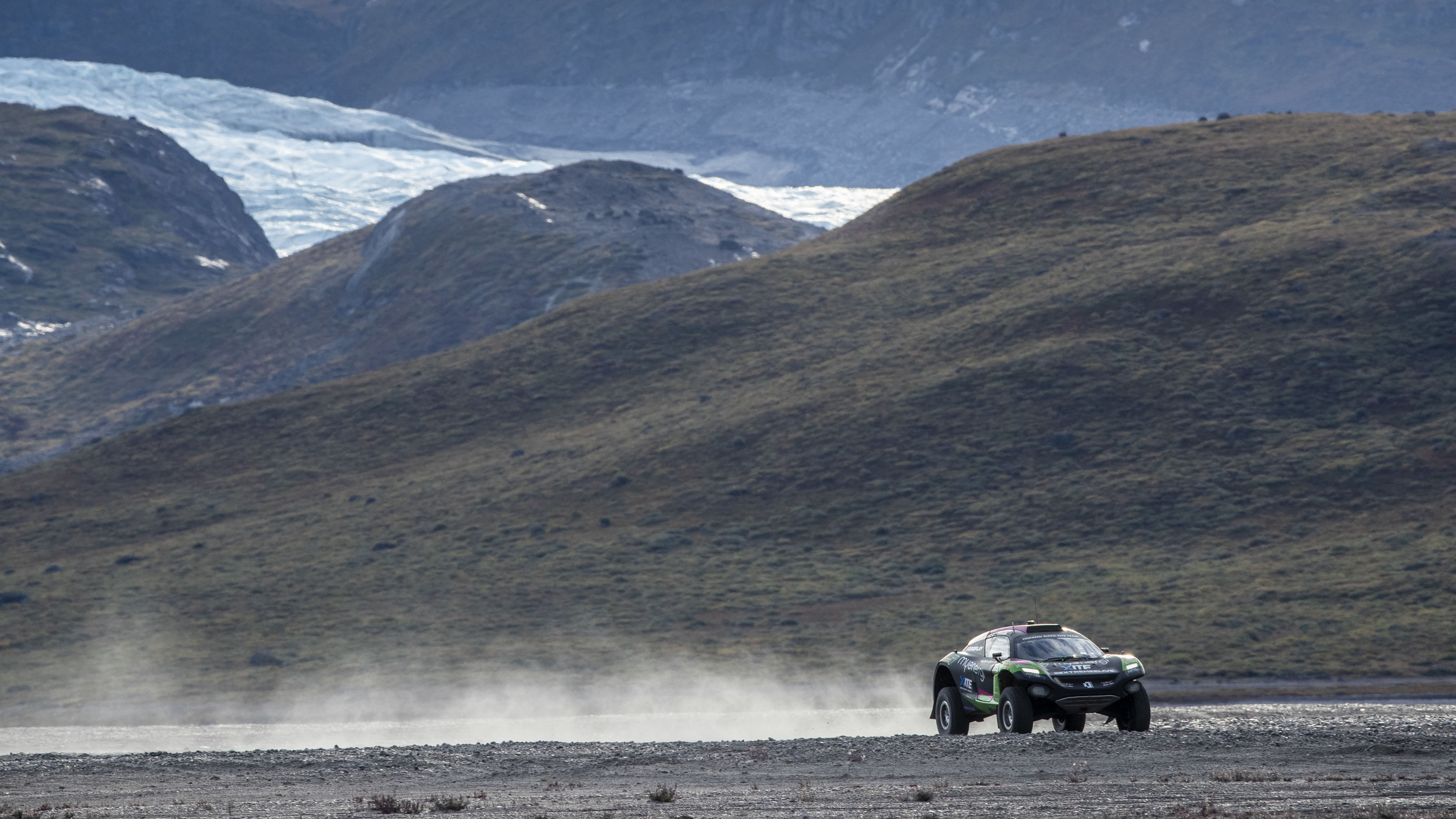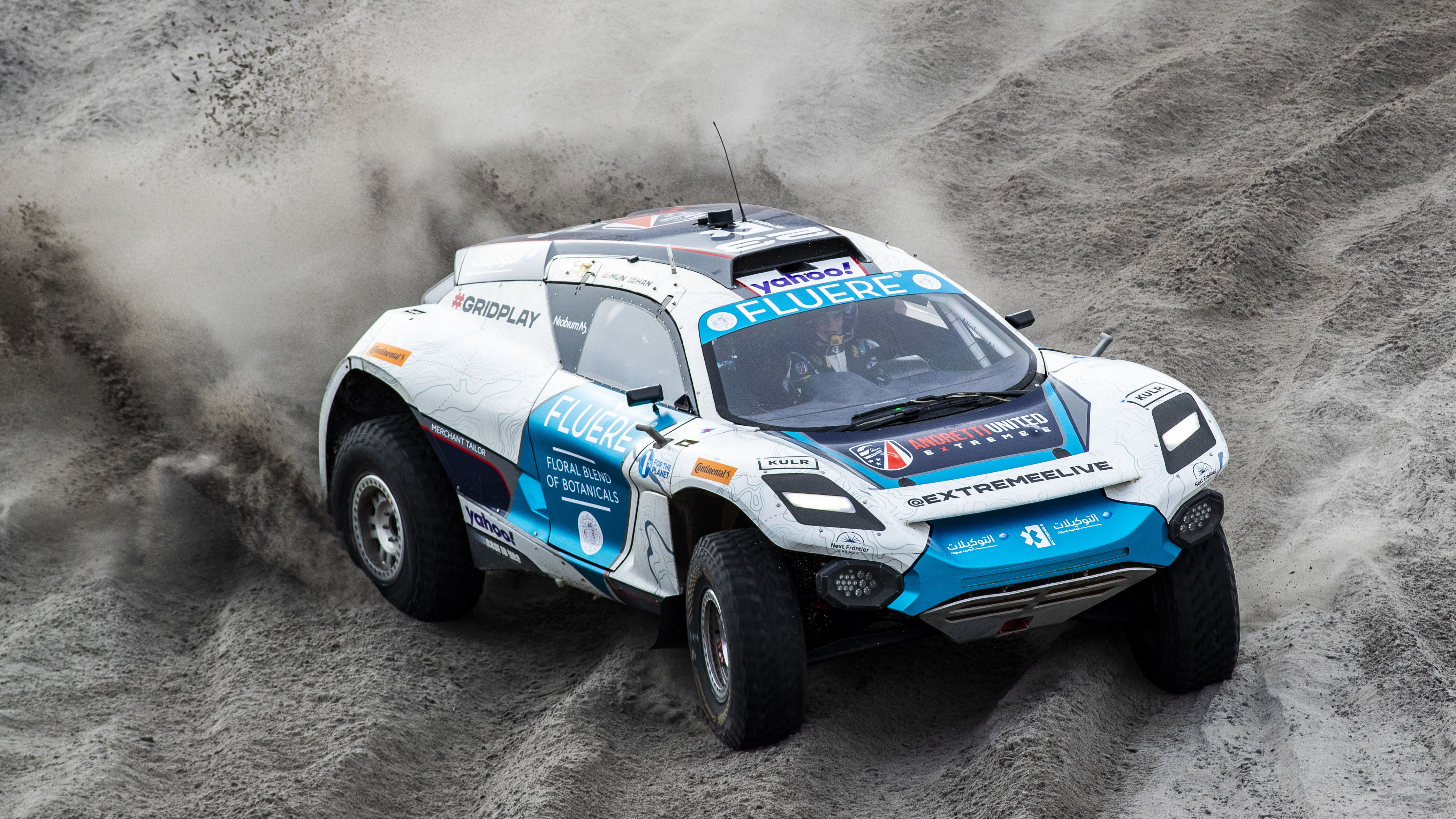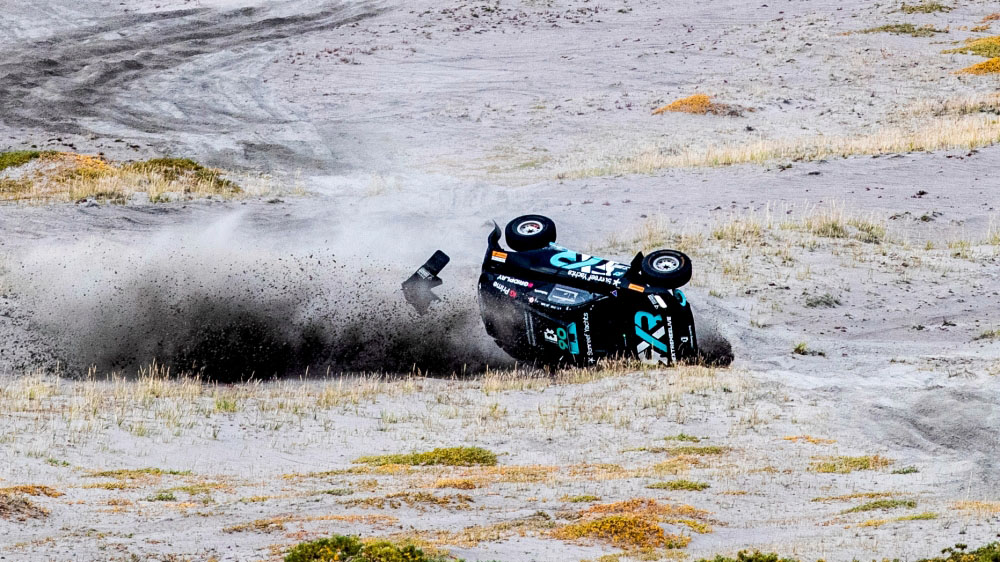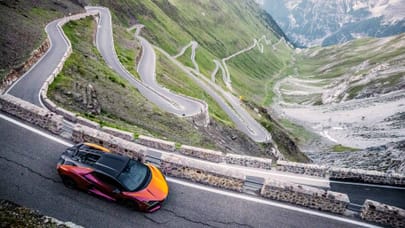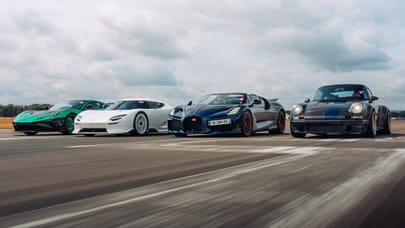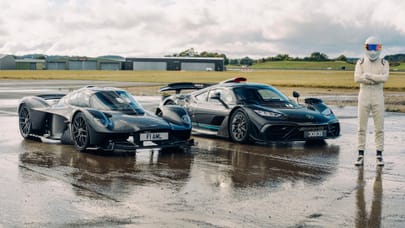
Extreme E: first ever motorsport held in Greenland, but why?
The electric off-road series has landed in the Arctic, and the frontline of climate change...
Professor Carlos Duarte is number 12 on Reuters’ Hot list. Not bad for a mild-mannered marine biologist and climate change scientist, a guy whose work would have been well-received in his academic echo chamber a few years ago but caused barely a ripple beyond that. As one of Extreme E’s principal advisers, though, he is revelling in the new platform he has been gifted. And we would all do well to listen to what he has to say, regardless of what vehicle his solutions arrive in.
"The people who pay attention to us are the ones who are already interested in climate change," he tells me. "We are preaching to the choir. But the motorsport audience is an eclectic one, it gives us massive breadth, and it means we are talking to people outside our bubble. And it’s particularly good at engaging young people, which is very important, because they find the future that we’re handing over to them too dark and difficult to think about. Eco-anxiety is something that troubles me greatly. If we give them a message about solutions, it will also give them a message full of hope and possibility."
We’re talking in one of the tents that makes up the compact but clever paddock of the Extreme E championship. In case you don’t know, this is a motorsport start-up that sees pure-electric Dakar style rally raid vehicles tackle tough terrain in parts of the world in which the impact of climate change is particularly acute. Entertainment-oriented it might be, but the series also aims to shine a light on the issues, as well as engaging in legacy projects to improve the venues it visits.
TG.com attended the first round in Saudi Arabia in early April, highlighting desertification, while the follow-up Ocean X-Prix was held in Senegal in May. Now we’re in Greenland for the long-awaited Arctic event, arguably the key race in the calendar, primarily because this remote and spectacularly beautiful country also happens to be on the frontline of climate change. There is no single use plastic to be seen anywhere, and we were required to bring our own bowls and cutlery with us. The toilets are a decidedly non-flushing, non-chemical, 100 per cent natural compost heap. ‘Thank you for giving a s***,’ it says on the inside of the door. This is a solution Formula One has yet to adopt. A hydrogen fuel cell supplies the energy for the car’s batteries.
Lewis Hamilton, Nico Rosberg and Jenson Button are among the team owners, while the drivers include stellar names like Sebastian Loeb and Carlos Sainz Snr. Gender equality is another hot button topic XE addresses: each of the nine teams fields male and female co-drivers. It’s the latter group that has provided most of the break-out stars.
"People say to me, you have to fly to these places to do the racing, so how can that be environmentally friendly?" Jenson Button tells TG.com. "But we’re bringing attention to the issues to a massive worldwide audience and that’s better than sitting on your sofa twiddling your thumbs, isn’t it? I mean, what good is that to anyone?"
Question: how much do you know about Greenland? If you’ve flown to America you might have glimpsed it through the plane window and thought, ‘that’s huge’. And it is: the planet’s biggest island, in fact, the 12th largest country in the world, and 80 per cent of it is covered by ice. Ice that is currently beating a hasty retreat, with catastrophic results for the parts of the planet you’re more familiar with. The total population is just 56,000 and these hardy, adaptable souls have spent the last four decades watching their environment change unutterably.
Last week, Greenland topped the global news agenda when rain was recorded at the summit of its ice cap for the first time since records began. The peak is 3,216m (10,551ft), a height at which temperatures are usually well below freezing. When the rain fell there on 14 August, scientists at the US National Science Foundation summit station were unable to accurately measure the extent of the precipitation because they didn’t have the necessary equipment to do it. It’s not supposed to rain in Greenland because it’s generally too cold.
The Extreme E race is being held on a plain in the shadow of the Russell Glacier, part of the vast – and vastly significant – Greenland ice sheet, whose collapse is one of the critical markers of global climate change. The Russell Glacier is currently shedding an estimated 200 gigatons of ice per year, equivalent to 80 million Olympic-sized swimming pools. If the ice sheet was to melt completely, global sea levels would rise by seven metres.
TG.com arrived in Greenland on Tuesday on an Extreme E charter, landing in the tiny town of Kangerlussuaq on the central western side of the country and about 30 miles north of the Arctic circle. It’s home to a population of just 600 people, but until the early 1990s it was also a US military base so its central feature is a 9,200ft-long runway. Its proximity helped make the XE race possible, although the championship actually moves between rounds on board a former Royal Mail transport ship called the St Helena.
Top Gear
Newsletter
Thank you for subscribing to our newsletter. Look out for your regular round-up of news, reviews and offers in your inbox.
Get all the latest news, reviews and exclusives, direct to your inbox.
The racing itself is almost an excuse for debate. Amongst other attendees this weekend is Christiana Figueres, a Costa Rican diplomat and one of the key architects of the 2015 Paris Agreement on climate change. Her book, The Future We Choose: Surviving The Climate Crisis, is a global best-seller, and along with Professor Duarte, XE founder Alejandro Agag, the series’ legacy manager Louisa Tholstrup and a certain Sebastian Loeb, took part in a panel discussion onboard the St Helena. The nine-time world rally champion is usually a man of few words, but he’s making them count this time. Figueres, though, is impassioned, brilliant and unequivocal.
"What Extreme E is doing, and what sport can do in general, is to build a communication bridge. It helps disseminate and democratise that message and takes it from the lab to the kitchen table," she says.
"There is a siloed mentality when the fact is that climate change, diversity, desertification and poverty are all inter-linked. Everything in the natural world is interlinked and yet as humans we’re still struggling to understand that this example is the one we should be following in terms of our human and economic constructs. No one can say they didn’t know. The scientists have been telling us for years, and if you didn’t know it’s because you didn’t want to know.
"We are at a moment of such historical consequence in the evolution of the planet and humankind that we can no longer sit back. Collectively we have what it takes to make a difference. Nobody would have thought we’d be racing electric SUVs a decade ago, so we can stand tall and say, ‘we’re going to do this’. Frankly, we don’t have any other option."
Trending this week
- Car Review
BMW 1 Series
- Top Gear's Top 9
Nine dreadful bits of 'homeware' made by carmakers




